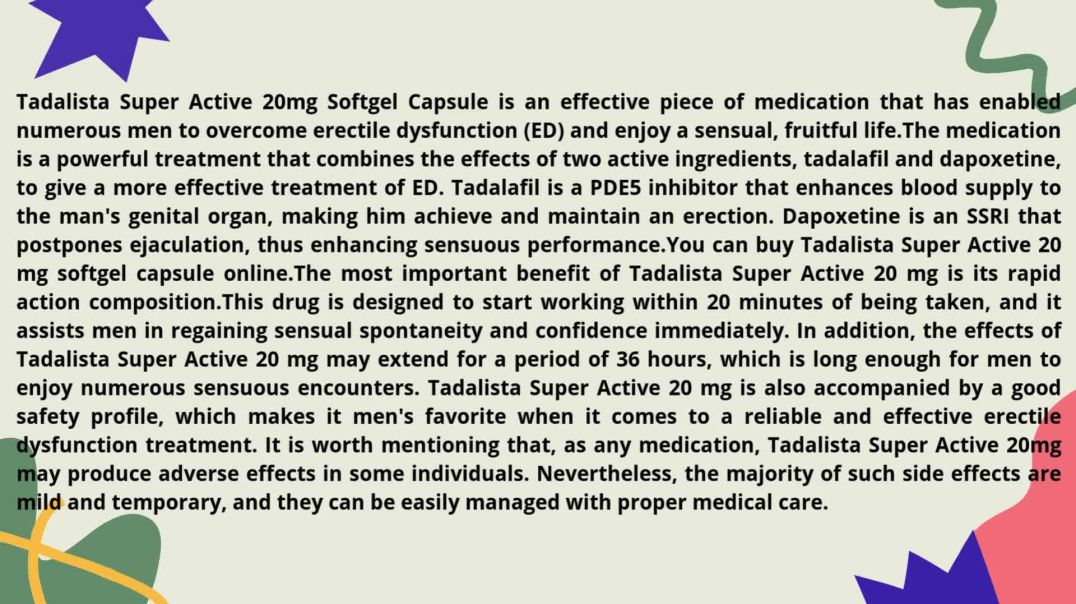Top videos
Natural Ways To Stop Hair Loss, Hair Regrowth Home Remedies, Best Medicine For Hair Regrowth---- http://how-to-regrow-your-hair.info-pro.co/ --- What Is The Best Male Hair Loss Treatment? Well there are actually many that can be given. The reason for this is simple – male hair loss is not caused by a singular problem alone. Hair loss can be caused by genetics, stress, aging, and others and thus the treatment will be different for each one. If you are talking about hair loss related to genetics however then there are a few products or procedures that you might want to take note of. Pattern hair loss or Male pattern hair loss is called Androgenic Alopecia. It’s basically the result of hormones called androgens which is caused by genetic predisposition. To put it simply, the reason you are losing your hair is because you are genetically predisposed to. The general rule of thumb is that hair can still be thickened anywhere that it’s still growing and a hair loss treatment regimen is one of the most effective solutions you have at hand. An area that is already slick and hairless will most likely not impossible to restore, and hair transplants or a hair system is your best bet for this. Since many combinations of thinning and slick are often present in men, a treatment regimen is most often the best or sometimes the only solution available. Transplants and hair systems or toupees should only be considered if you have already undergone a treatment regiment for two solid years without achieving any satisfactory results. No matter the type or situation you are dealing with, a scientifically backed hair loss treatment regimen is necessary. Learn the science behind HOW you can Re-Grow your hair and discover the logical solution to eliminate your balding....effectively, naturally and permanently http://how-to-regrow-your-hair.info-pro.co/
Como Curar Boqueras, Remedio Casero Para Boqueras, Porque Se Producen Las Boqueras, Boqueras ---- http://queilitis-angular.good-info.co --- ¿Qué Es Y Cómo Se Trata La Queilitis Angular? Perleche, queilosis, estomatitis, boqueras, son otras denominaciones con las que se conoce a la queilitis angular. Las comisuras de los labios presentan lesiones inflamatorias. Las grietas verticales a nivel de la piel pueden profundizarse y provocar ulceraciones, llagas, sangrados, infecciones, descamaciones, costras. Con ello, sobrevendrán las dificultades para hablar, para sonreír, para ingerir los alimentos y las bebidas. La queilitis angular no discrimina. Puede afectar tanto a los bebés como a los niños, a los adultos o a los ancianos. A menudo las causas derivan de una mala alimentación, carente de los nutrientes esenciales para el organismo. También las deficiencias nutricionales pueden deberse a la incapacidad orgánica para absorber los nutrientes, como sucede con la enfermedad celíaca. O las causas pueden provenir de estímulos que afectan una piel hipersensible, como ciertas alergias. O se puede producir por ciertos medicamentos. O incluso por prótesis dentarias mal ajustadas. Y la queilitis puede agravarse en una persona que padece micosis como la Cándida albicans. Lo cierto es que la boca es una zona húmeda, condición que dificulta la cura e incluso aumenta las manifestaciones nocivas en la piel y en la membrana que tapiza la cavidad interior de la boca. La humedad constante podrá ser caldo de cultivo para hongos y bacterias. Como muchas afecciones, la queilitis angular suele tener su origen en una mala alimentación. La hipovitaminosis o escasa provisión de vitamina A está considerada como posible desencadenante de la afección. Asimismo, es atribuible a la falta de minerales como el zinc, el hierro y la riboflavina (vitamina B2). Una vez que la queilitis angular está en proceso, la falta de nutrientes se agudiza. Sucede que a medida que la dolencia evoluciona se hace cada vez más difícil la ingesta de alimentos y la hidratación. Recordemos que beber suficiente cantidad de agua es esencial para el organismo. ¿Qué podemos hacer YA mismo? Hoy Existe Un Novedoso Tratamiento, Totalmente Natural Y Muy Simple, Con El Que Se Puede Eliminar La Queilitis Angular O Boqueras En Tan Solo 7 Días (O Menos). Este Revolucionario Sistema Ataca La Verdadera Causa De La Enfermedad Y No Solo Los Síntomas, Asegurando Resultados A Largo Plazo. Si Usted Desea Eliminar Para Siempre Esas Grietas Dolorosas Y La Vergüenza Que Causa Esta Afección, Puede Conocer Este Método De Resultados Comprobados Haciendo Clic En El Siguiente Enlace: http://queilitis-angular.good-info.co
Removing acne scars with laser
Common causes of the knee pain
Knee pain is very common and in this video we will present the most common problems that can cause pain in the knee. (Patella) itself, which is in front of the knee, or from the tendons that are attached to the kneecap (patellar tendon and quadricep tendon). One of the most common problems is patellar chondromalacia which is chronic pain due to the softening of the cartilage beneath the kneecap. The cartilage of the kneecap will have some erosions, defects, or holes from mild to complete inside the joint (exactly in the back of the kneecap).
• Pain in the front of the knee
• Occurs more in young people
• Becomes worse from climbing up stairs and going downstairs
Treatment is usually nonsteroidal anti-inflammatory medication, physical therapy, and surgery is very rare. Also in front of the kneecap, the patient may get pain due to prepatellar bursitis.
When there is prepatellar bursitis, the patient will see that the swelling, the inflammation, and the pain is located over the front of the kneecap. The bursa becomes inflamed and fills with fluid at the top of the knee, causing pain, swelling, tenderness and a lump in that area on top of the kneecap. If the pain is in front of the knee but below or above the patella, this may indicate that the patient has tendonitis. Patellar tendonitis is an overuse condition that often occurs in athletes who perform repetitive jumping activities. Patellar tendonitis is a knee pain that is associated with focal patellar tendon tenderness and it is usually activity related. It is located below the kneecap and is called "jumper's knee". Patellar tendonitis affects approximately 20% of jumping athletes. There will be tenderness to palpation at the distal pole of the patella in extension and not in flexion. Quadriceps inflexibility, atrophy and hamstring tightness are predisposing factors for this condition. Treatment is rest, anti-inflammatory medication, stretching and strengthening of the hamstrings and quadriceps. Use an eccentric exercise program. The early stages of patellar tendonitis will respond well to nonoperative treatment. Another important cause of knee pain is a meniscal tear. The meniscus is the cushion that protects the cartilage in the knee. Injury will cause pain on the medial or the lateral side of the knee exactly at the level of the joint. The patient will complain of a history of locking, instability and swelling of the knee. McMurray test will be positive. A painful pop or click is obtained as the knee is brought from flexion to extension with either internal or external rotation of the knee. Arthritis of the knee Knee arthritis is very common. The cartilage cells die with age and its repair response decreases in the joint collapses with increased breakdown of the framework of the cartilage. The patient will have progressive blurring away of the cartilage of the joint with decreased joint space as seen on x-rays. Another source of pain is the Baker's cyst. The cyst is in the back of the knee between the semimembranosus yes and the medial gastrocnemius muscles. Another important source of knee pain is a ligament injury. Here is a normal knee without a ligament injury. Here you can see from the front, you can see the lateral and medial collateral ligament. You can see the ACL and PCL from the side view. These ligaments are usually injured as a result of a sports activity. Here is an example of a sports knee injury. Here is an example of the medial collateral ligament injury. This is the most commonly injury knee ligament injury to this ligament is on the inner part of the knee. Here is an example of an injury of the anterior cruciate ligament. It involves a valgus stress to the knee. Lachman test is usually positive, and MRI is diagnostic. Another important cause of knee pain is iliotibial band syndrome of the knee. Inflammation of the thickening of the iliotibial band results from excessive friction as the iliotibial band slides over the lateral femoral condyle. The iliotibial band is a thick band of fascia that extends along the lateral thigh from the iliac crest to the knee. And as the knee moves, the IT band was repeatedly shifted forwards and backwards across the lateral femoral condyle. The patient will complain of swelling, tenderness, and crepitus over the lateral femoral condyle. The condition occurs in the ITB S occurs in runners, cyclist and athletes that require repeated knee flexion and extension. The pain may be reproduced by doing a single-leg squat. The Ober's test is used to at assess tightness of the iliotibial band. MRI may show edema in the area of the ITB. Treatment is usually nonoperative with rest and ice, physical therapy, with stretching, proprioception, and improvement in neuromuscular coordination. Training modification and injections may be helpful. Surgery is a last resort. Surgical excision of the scarred inflamed part of the iliotibial band.
LASIK eye surgery is commonly performed laser refractive surgery to correct vision problems. This 3d animation shows how laser-assisted in situ keratomileusis (lasik) can be an alternative to glasses or contact lenses.
It’s one of many vision correction surgeries that work by reshaping your cornea, the clear front part of your eye, so that light focuses on the retina in the back of your eye.
In eyes with normal vision, the cornea bends (refracts) light precisely onto the retina at the back of the eye. But with nearsightedness (myopia), farsightedness (hyperopia) or astigmatism, the light is bent incorrectly, resulting in blurred vision.
During LASIK surgery, a special type of cutting laser is used to precisely change the shape of the dome-shaped clear tissue at the front of your eyes (cornea) to improve vision.
Glasses or contact lenses can correct vision, but reshaping the cornea itself also will provide the necessary refraction.
For more information about medical animation, please visit https://www.amerra.com
Watch more medical animations:
Craniectomy brain surgery - 3D animation: https://youtu.be/1RkseDeYS9g
Accessing an implantable port training - 3D animation: https://youtu.be/xSTpxjyv4O4
Open Suctioning with a Tracheostomy Tube - 3D animation: https://youtu.be/wamB7jpWCiQ
Ventriculostomy Brain Surgery - 3d animation: https://youtu.be/pUy0YDzVNzs
Suctioning the endotracheal tube - medical animation: https://youtu.be/pN6-EYoeh3g
Functional endoscopic sinus surgery (FESS) - 3D animation: https://youtu.be/qKTRyowwaLA
How to insert a nasogastric tube for NG intubation - 3d animation: https://youtu.be/Abf3Gd6AaZQ
Oral airway insertion - oropharyngeal airway technique - 3D animation: https://youtu.be/caxUdNwjt34
Nasotracheal suctioning (NTS) - 3D animation: https://youtu.be/979jWMsF62c
Learn about hemorrhoids with #3d #animation: https://youtu.be/R6NqlMpsiiY
CPR cardiopulmonary resuscitation - 3D animation: https://youtu.be/G87knTZnhks
What are warts (HPV)? - 3D animation: https://youtu.be/guJ1J7rRs1w
How Macular Degeneration Affects Your Vision - 3D animation: https://youtu.be/ozZQIZ_52YY
NeoGraft hair transplant procedure – animation: https://youtu.be/C-eTdH2UPXI
Knee replacement involves replacing a knee joint that has been damaged or worn away, usually by arthritis or injury. Find out more here: http://bit.ly/MAdfmE
The content is intended for general information only and does not replace the need for personal advice from a qualified health professional.
Histology lab video reviewing the structure and cells of thin skin, thick skin, and skin sensory structures on digital histology slides. This video is a part of our Histology Video Course (https://youtube.com/playlist?l....ist=PLnr1l7WuQdDynxT
All Histology Videos: https://youtube.com/playlist?l....ist=PLnr1l7WuQdDynxT
Thank you to our sponsor Doc2Doc Lending, the Personal Lending platform designed for Doctors, by Doctors. Check out https://doc2doclending.com/davinci to learn more today.
DaVinci Academy Merch - Coffee mugs, T-shirts, hoodies and more: https://my-store-d90f46.creator-spring.com
Additional YouTube Content
Biochemistry videos: https://youtube.com/playlist?l....ist=PLnr1l7WuQdDzCUC
Anatomy Videos: https://youtube.com/playlist?l....ist=PLnr1l7WuQdDz2dK
DaVinci Cases Videos: https://youtube.com/playlist?l....ist=PLnr1l7WuQdDyJUl
The DaVinci Hour Podcast: https://youtube.com/playlist?l....ist=PLnr1l7WuQdDwSm9
DaVinci Academy Website: https://www.dviacademy.com/
This innovative minimally invasive technique can remove large tumors located deep in the brain
To learn more, please visit http://brainsurgery.upmc.com
Caverta 100mg is an ideal remedy for those wanting to spice up their love lives. Carefully crafted and engineered, this highly effective product works towards increasing the pleasures of sensual activity, bringing with it the possibility of once again finding love and confidence between the sheets.100 mg of sildenafil citrate, a world-class and powerful active substance that is well known for its unparalleled performance in erectile dysfunction treatment, are present in every tablet. Caverta 100 mg helps the individual say goodbye to the hassle of performance anxiety and say hello to a newfound sense of virility. Caverta 100mg's impact is tremendous with a single dose being enough to provide astonishing outcomes. Its mode of action is to stimulate increased blood flow to the genital area, which causes a strong and long-lasting erection that guarantees full satisfaction for both partners and individuals. Significantly, Caverta 100mg not only ensures excellent results but also places utmost importance on safety. Produced in state-of-the-art plants, every tablet is subjected to stringent quality checks to guarantee users' well-being. Additionally, the convenience of using Caverta 100mg to be fit into one's lifestyle enables the seamless regain of sensuality.Buy Caverta 100mg online at our web store https://www.firstchoicemedss.c....om/caverta-100mg.htm
Erex 100mg have been designed to treat such an ailment, which ultimately occurs in many men around the world. This product help men achieve and sustain a hard and enduring erection for an extremely long duration, thereby helping them enjoy pleasurable sensual encounters.One of the advantages that erex 100mg possesses is that it works well in erectile dysfunction treatment.This product helps the male patient to get and sustain an erection by enhancing the supply of blood to the male genital organ. Among different rapid-action drugs, Erex 100 mg is a well-known one that can initiate its action on erectile dysfunction within 30 minutes of its intake. It is a reliable and efficient cure. Another benefit of the Erex 100 mg is that it is a safe product to take. Because of the fact that this product has undergone extensive testing and approval by the regulatory body everywhere, there is an assurance that it will be safe and will be able to treat erectile dysfunction. If Erex 100 mg is used properly by a doctor, then there will not be any major side effects. Considering everything, Erex 100mg is an excellent medicine for those patients who are affected by erectile dysfunction.Buy Erex 100mg online at our web store https://www.firstchoicemedss.com/erex-100mg.html
Fildena 150mg is a solution which is extremely successful if erectile dysfunction's treatment is required in men. As its main ingredient, it contains sildenafil citrate, a potent PDE5 inhibitor that boosts blood flow to the pelvic area to create a hard, long-lasting erection during sensual stimulation. Its quick onset of action, typically within 30 minutes of intake, is one of the key benefits of Fildena 150mg. So, you will not have to plan in advance in order to enjoy spontaneous sensual activities. Its extended erection (4-5 hours) is another advantage of Fildena 150 mg, allowing you ample time to enjoy your sensual experience. For the management of ED, the regulatory body has approved Fildena 150mg as a reliable and safe medication. It has been proven effective in most cases following extensive testing by several clinical trials. With minimal reported side effects, most patients find the drug well-tolerated.Being more affordable than other ED medications available is another great advantage of Fildena 150mg.For men with ED, it provides a premium, cost-effective treatment option. All in all, men who wish to improve their sensual performance and regain their bedroom confidence can certainly look into Fildena 150 mg.Buy Fildena 150mg online at our web store https://www.firstchoicemedss.c....om/fildena-150-mg.ht
Tadalista Super Active 20mg Softgel Capsule is an effective piece of medication that has enabled numerous men to overcome erectile dysfunction (ED) and enjoy a sensual, fruitful life.The medication is a powerful treatment that combines the effects of two active ingredients, tadalafil and dapoxetine, to give a more effective treatment of ED. Tadalafil is a PDE5 inhibitor that enhances blood supply to the man's genital organ, making him achieve and maintain an erection. Dapoxetine is an SSRI that postpones ejaculation, thus enhancing sensuous performance.You can buy Tadalista Super Active 20 mg softgel capsule online.The most important benefit of Tadalista Super Active 20 mg is its rapid action composition.This drug is designed to start working within 20 minutes of being taken, and it assists men in regaining sensual spontaneity and confidence immediately. In addition, the effects of Tadalista Super Active 20 mg may extend for a period of 36 hours, which is long enough for men to enjoy numerous sensuous encounters. Tadalista Super Active 20 mg is also accompanied by a good safety profile, which makes it men's favorite when it comes to a reliable and effective erectile dysfunction treatment. It is worth mentioning that, as any medication, Tadalista Super Active 20mg may produce adverse effects in some individuals. Nevertheless, the majority of such side effects are mild and temporary, and they can be easily managed with proper medical care.Buy Tadalista Super Active 20mg Softgel online at our web store https://www.firstchoicemedss.c....om/tadalista-super-a
Tadalafil Super Active Tablets are used to treat the physical problems of erectile dysfunction in men. These oral drugs are effectively used in the treatment for ED disorders in men assuring erection for longer duration of time.
Buy Now : https://www.rsmenterprises.in/....product/viewdetail/t
#rsmenterprises #health #healthcare #tadagrasuperactive #tadalafil20mg #genericcialis #malecialis
Buy Kamagra 100mg is a potent medicine effectual in treating the condition of Erectile Dysfunction in men. The medicine contains an active substance of Purchase Sildenafil 100mg.
Buy Now : https://www.rsmenterprises.in/....product/viewdetail/k
#rsmenterprises #health #healthcare #kamagra100mg #sildenafil100mg #edmedicine #genericviagra #maleviagra
Sildigra Black Force is a potent medicine that works efficiently to enhance improvement in erectile dysfunction. It comes with an active substance of Sildenafil 200mg.
Buy Now : https://www.rsmenterprises.in/....product/viewdetail/s
#rsmenterprises #health #healthcare #sildigrablackforce #sildenafil200mg #edmedicine #genericviagra200mg #maleedmedicine
MaxGun Sublingual Spray, fortified with Sildenafil Sublingual Spray, has numerous advantages for people looking to improve their sexual experiences. Today Order Now!!
Buy Now : https://www.rsmenterprises.in/....product/viewdetail/m
#rsmenterprises #health #healthcare #sildenafiloralspray #maxgunoralspray #genericviagraoralspray #edmedicine
Ladygra 100mg is an oral medication that works to manage the problem of women's sensual disorder. It contains an active substance of Sildenafil 100mg.
Buy Now : https://www.rsmenterprises.in/....product/viewdetail/l
#rsmenterprises #health #healthcare #womenviagra #ladygra100mg #femalesildenafil100mg #femalesensualpills #femaleviagra
The Buy Sildenafil Oral Jelly (Kamini Oral Jelly) offered by RSM Enterprises is used for erectile dysfunction treatment.We also provide safe packaging of our Sildenafil Oral Jelly.
Buy Now : https://www.rsmenterprises.in/....product/viewdetail/s
#rsmenterprises #health #healthcare #sildenafiloraljelly #kaminioraljelly #edmedicine #genericviagraoraljelly #maleviagraoraljelly




















